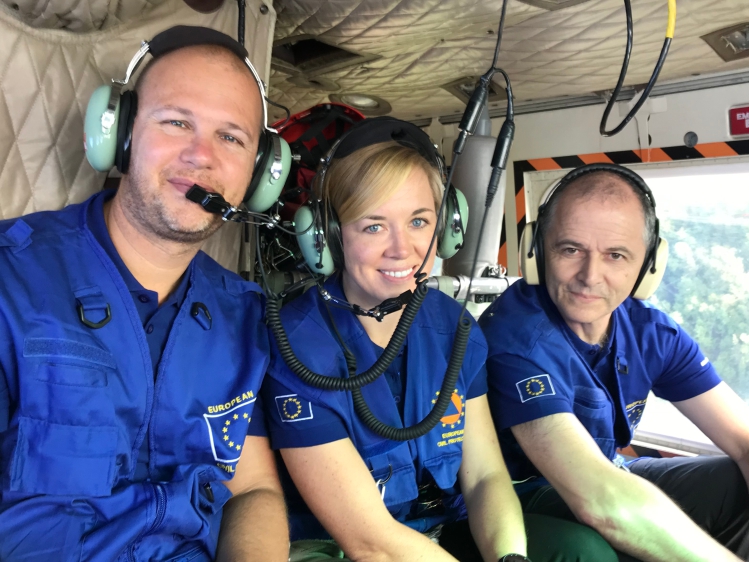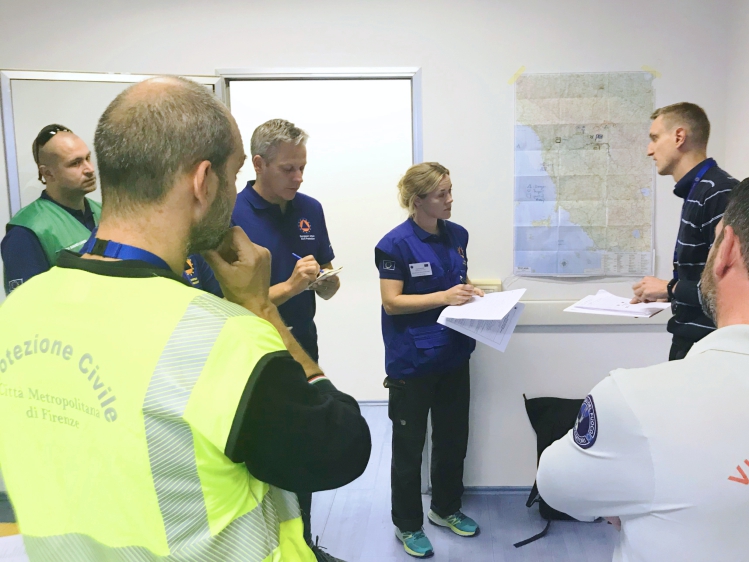
KAJSA SJÖSVÄRD
This month the AHA Centre invited Kajsa Sjösvärd – an international roster member from the Swedish Civil Contingencies Agency (MSB) and disaster management professional – to provide an insight into her work in disaster management both internationally and within Sweden. Topics ranged from the current pandemic response through to leadership and the sector in general, and we bring to you some of Kajsa’s key experiences and recommendations from the wide-ranging interview.
“My focus is on how to set up a well-functioning staff function, how to optimize it and how to maintain the personnel on a good energy level, despite the stressful environment”
Kajsa has recently been appointed team leader of the MSB’s LACER project being implemented with the AHA Centre, which provides her a new experience of working in the ASEAN region, to go alongside over a decade of experience with MSB and also locally in Sweden. “I am the Director of Crisis Management and Societal Safety at the County Board of Dalarna, in Sweden, and within that capacity I often take on the role of Chief of Staff when a disaster occurs in the County. I have also been a member of MSBs international roster for 10 years and have had several assignments in different capacities and continents.” Recently, Kajsa has also been engaged in Sweden’s pandemic response, as well as leading a response team after the devastating forest fires in Sweden during 2018.
A big part of Kajsa’s role is leadership – which sees her in charge of a range of staff during disaster responses at a local and international level. “My focus is on how to set up a well-functioning staff function, how to optimize it and how to maintain the personnel on a good energy level, despite the stressful environment” Kajsa explains. “I enjoy working with other people in teams and to set up and reach goals. It is challenging to be a part of the development process where an organisation, and foremost the persons within the organisation, are working together to reach new goals and continuously progress. I thrive being a leader in that context, to support and provide energy, but also to guide direction and find creative solutions to problems.” Kajsa also highlights the important aspects of leadership in the disaster field by explaining that “it is important to be communicative, flexible, have a positive mind-set, take the initiative and make decisions when dealing with disasters”.
Kajsa also highlights the importance of positivity and leadership during long and challenging deployments, and also promotes undertaking activities to wind down when possible – with Kajsa’s preferences being running and mountain biking. She also highlights the lessons that the global pandemic has taught us in relation to disaster management, and believes it has strengthened some of the long-held beliefs of global disaster management professionals. “I believe more global cooperation, coordination and learning is needed, not less. No single state can act in isolation concerning these borderless disasters. That is why transboundary cooperation, at different levels, will remain crucial. I think that it poses a challenge, but also a great opportunity for everyone working with disasters.”
“it is important to be communicative, flexible, have a positive mind-set, take the initiative and make decisions when dealing with disasters”.
Written by : Moch Syifa and William Shea | Photo : AHA Centre



